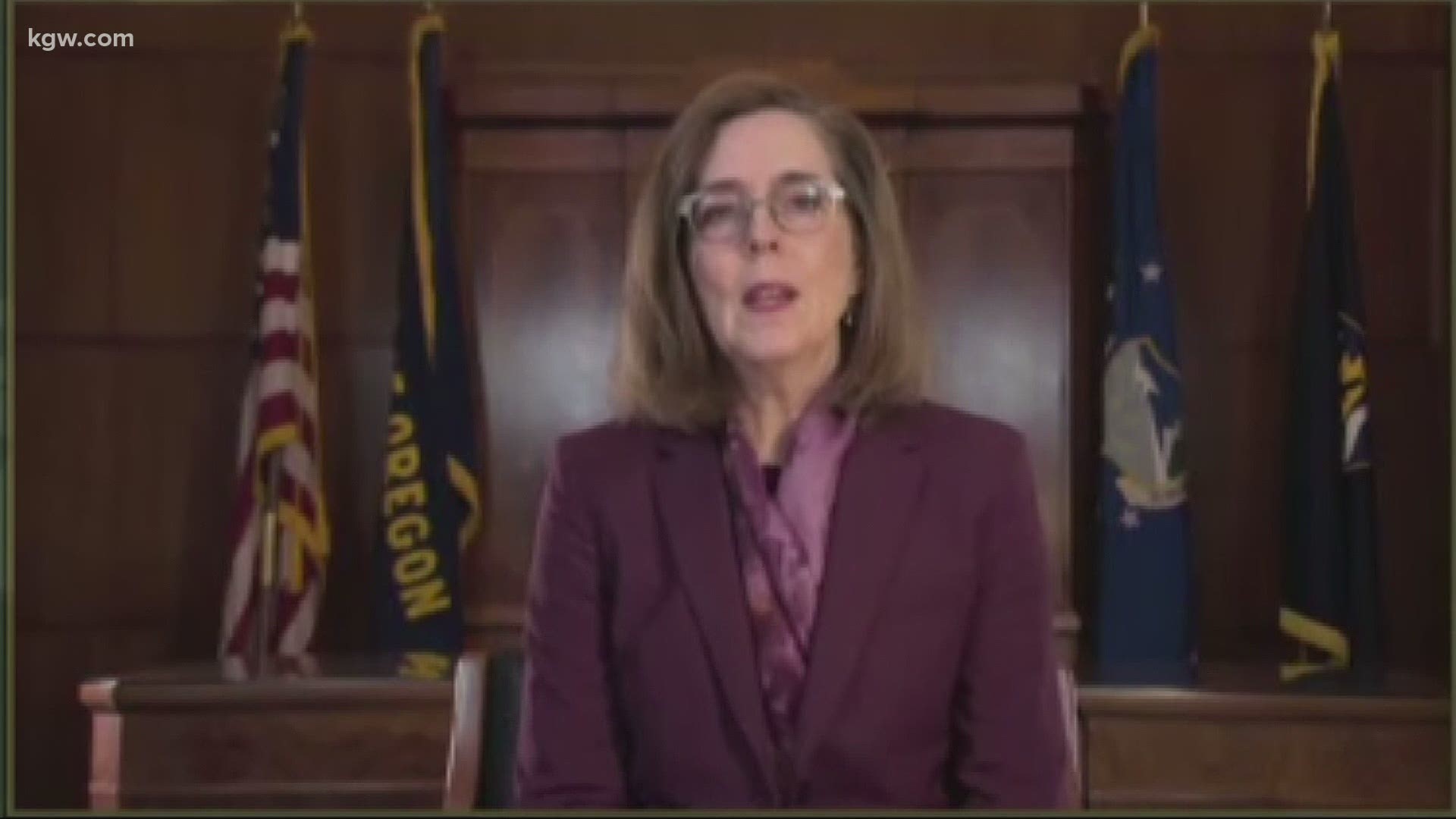PORTLAND, Ore. — Oregon Gov. Kate Brown held a press briefing Wednesday to provide an update on the state's ongoing response to COVID-19, specifically new health and safety measures that will take effect as the current two-week statewide "freeze" ends next week.
The freeze for the entire state of Oregon began on Nov. 18, aimed at limiting group activities that have been contributing to the rapid spread of COVID-19 throughout the state. Under the freeze restrictions, restaurants are limited to takeout only and other businesses, such as gyms, are closed.
With COVID-19 cases and hospitalizations at record-high numbers, Brown on Wednesday urged Oregonians to keep Thanksgiving gatherings small to protect against the further spread of the coronavirus.
She also said strict measures will likely remain in place even after the freeze for at least 21 counties found to be at "extreme risk" for COVID-19, one of four risk levels that make up a new health and safety framework she outlined.
"At each risk level — extreme risk, high risk, moderate risk, and lower risk — health and safety measures and guidance for businesses and individuals will apply," the governor's office explained. "The framework is intended to establish sustainable protection measures for Oregonians in counties with rapid spread of COVID-19, while balancing the economic needs of families and businesses in the absence of a federal aid package."
On Monday, the Oregon Health Authority (OHA) will revisit the data to determine which counties can end the freeze on Dec. 3.
"In each subsequent two-week period, the Oregon Health Authority will examine and publish county data weekly, but county risk levels will not change until the end of the second week," the governor's office said in a press release. "In the first week, counties will be given Warning Week data to prepare for potential risk level changes. In the second week, county risk levels will be updated based on that week’s data."
Here's a look at which metrics will determine the risk level for each county:
In counties with extreme risk, the following activities will be allowed, with health and safety protocols in place:
- Social and at-home gatherings with people from outside your household will be limited to a maximum of six people, with a recommended limit of two households.
- Restaurants, bars, and other eating and drinking establishments will be limited to a maximum of 50 people for outdoor dining only, with only six people per table. Take-out is strongly encouraged.
- Indoor recreation, fitness, and entertainment establishments, including gyms, will remain closed, however, outdoor recreation, fitness, and entertainment activities, including outdoor gym activities, will be allowed, with a maximum limit of 50 people outdoors.
- Retail stores, grocery stores, pharmacies, and indoor and outdoor shopping centers and malls will be limited to a maximum of 50% of capacity, with curbside pick-up encouraged.
- Faith institutions, funeral homes, mortuaries, and cemeteries will be limited to a maximum of 25% of capacity or 100 people indoors (whichever is smaller), or 150 people outdoors.
- Office workplaces will be required to utilize remote work to the maximum extent possible, with public-facing offices closed to the public.
- Personal services businesses will be allowed to continue to operate with health and safety measures in place.
- Long-term care facilities can allow limited outdoor visitation, following established health and safety protocols.
Here's a look at what activities will be offered under each risk category:
Oregon counties that reduce their COVID-19 risk levels will incrementally move to lower risk levels.
"It’s important to note that there is no Zero Risk category," the press release reads. "Until COVID-19 vaccines are widely available, health and safety precautions will remain in place so that schools, businesses, and communities can reopen, and stay open. At every risk level, to prevent COVID-19 outbreaks, Oregonians must continue to wear face coverings, watch their physical distance, wash hands, stay home when sick, and keep social get-togethers and gatherings small."

